Did you select a customer first? then add order?
DL:{ENTITY DATA:Customer:DiscountLevel} PR:[=-1*TN('{ITEM TAG:D{ENTITY DATA:Customer:DiscountLevel}}')]
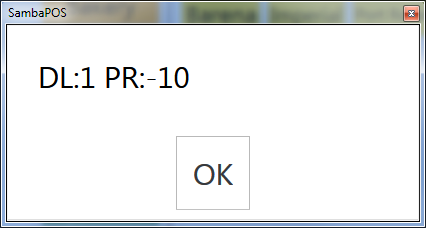
Is your Entity Name Customer ?
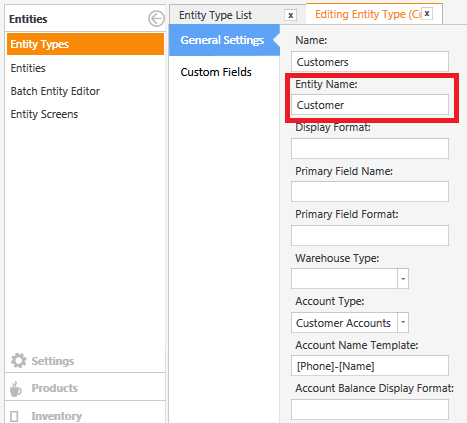
Did you select a customer first? then add order?
DL:{ENTITY DATA:Customer:DiscountLevel} PR:[=-1*TN('{ITEM TAG:D{ENTITY DATA:Customer:DiscountLevel}}')]

Is your Entity Name Customer ?

Yes, the customer is selected, and I can’t show any entity data at all…
Right! I changed the entity name recently… forgot about that 
It’s working now, but still has a few glitches:
@pipo your idea of storing the value I think might fit your needs better… I would explore that. I still have interest in attempting a build but I realized I have other priorities I want to finish first namely my system breakup into Database Tool Files.
Hm… I really wish we could have an order looper…
What happened with that idea @emre?
Don’t map the Order Tags (leave mapping blank), and they won’t show up…
Haven’t figured out what to do with these yet - this is the challenge.
That would do the trick… though there may be another solution.
I’m trying out the other way (with discount applied to whole ticket), and I’m already running into a problem:
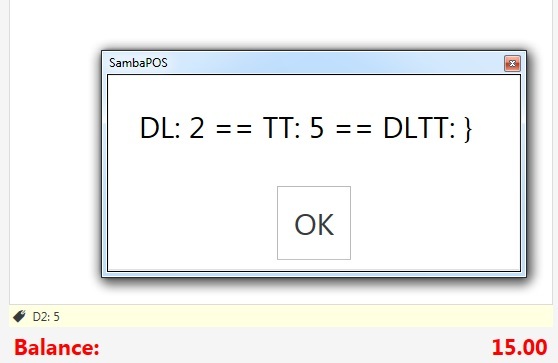
I’ve tried about everything I could think of to combine DL and TT into DLTT, but whatever I tried either gave me things like “}”, “}]” or just made sambapos crash…
You’re missing the function TN().
[=TN('{TICKET TAG:D{ENTITY DATA:Customer:DiscountLevel}}')]
Should return the value for {TICKET TAG:D2} which you are showing as being 5.
I tried that as well, but it gives me this:
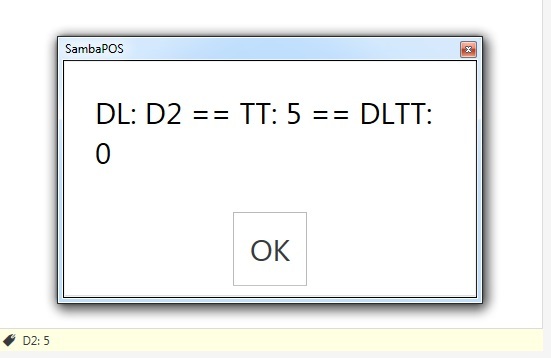
I used the exact same structure for TICKET TAG as for ITEM TAG, and it works for ITEM TAG, but not for TICKET TAG:
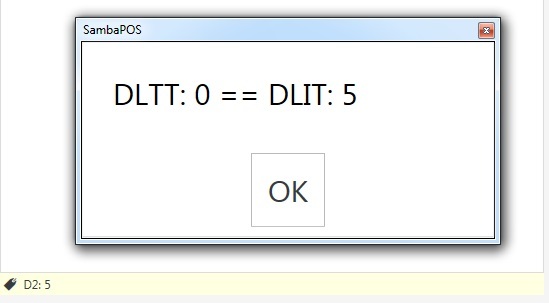
You correct, the Show Message Action is not evaluating properly, but it does apply the Ticket Tag regardless.
I am still using {ITEM TAG:X} to retrieve the discount value for the Product Tag:
[=-1*TN('{ITEM TAG:D{ENTITY DATA:Customer:DiscountLevel}}')]
, and the name of the Ticket Tag is being derived simply by:
D{ENTITY DATA:Customer:DiscountLevel}
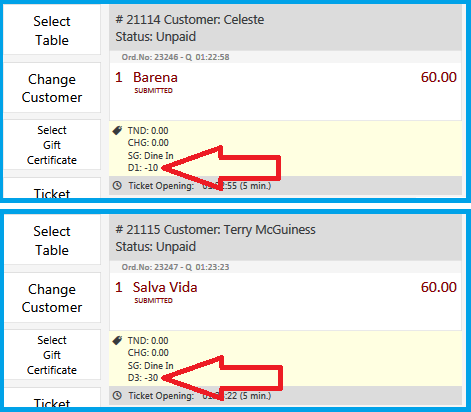
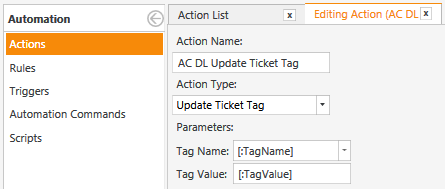
At some point (probably at Payment), you will still need to Update Ticket Calculation in order to apply the the Ticket Tag Discount Values.
And of course, you still need to handle no customer, change customer, remove customer.
Plus, you need to think about Quantities of the product, especially if they are in different Order Lines, because adding the same Product more than once is not going to create multiple Ticket Tags, since the Tag has the same name…
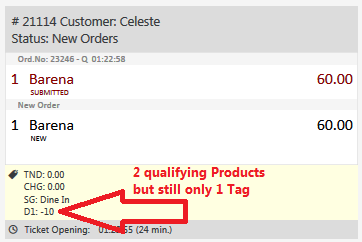
What I want to do is add the amount to the ticket tag instead of just replacing it like now.
But I think the dynamic parameter construction still doesn’t work as it should.
This is what I have now:
[=TN(’{TICKET TAG:D{ENTITY DATA:客人:Discount-level}}’)+(TN(’{ITEM TAG:D{ENTITY DATA:客人:Discount-level}}’) * {QUANTITY})]
But it’s still just replacing the value of the Ticket tag instead of adding to it…
It seems like the ticket tag is still not being used (=0) in the action parameter. Same thing as in the ShowMessage, it works for ITEM TAG but not for TICKET TAG…
I just realize I’m doing it all wrong anyway!
I wanted to follow the outline I described before:
So obviously I have to take the discount for every discount-level!
I think I’m too tired, I’m really messing up now!
This is what I should have done from the start:
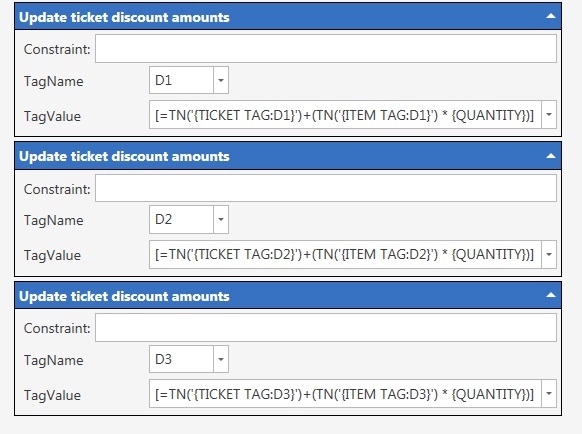
and that works perfectly!
… and I immediately see another problem, which I already had before, trying to implement something else (which is when I first started thinking I need an order looper):
I cannot catch the clicking of the plus and minus sign to increase/decrease the order quantity, so this method is again going to be useless…
So it’s back to start again…
Cumulative Tag working using Update Program Setting:
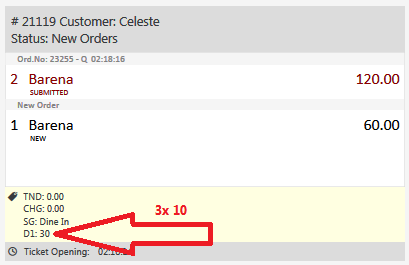
SettingName: D{ENTITY DATA:Customer:DiscountLevel}
SettingValue: [=TN('{ITEM TAG:D{ENTITY DATA:Customer:DiscountLevel}}')*{QUANTITY} +TN('{SETTING:D{ENTITY DATA:Customer:DiscountLevel}}')]
TagName: D{ENTITY DATA:Customer:DiscountLevel}
TagValue: [=TN('{SETTING:D{ENTITY DATA:Customer:DiscountLevel}}')]
Yes, but no matter how you do it, the problem is still:
You need to add to the number every time an order is added or increased, and distract when an order is removed/cancelled/voided/decreased. Most of these are not a problem, but the increase/decrease order quantity (plus and minus sign) cannot be caught with an event, so it’s impossible to implement this way…
I had the same problem here:
and found nothing to solve that then…
Pfffffffffffffffffffffffffffffff…
Order looper where are you? 
Try handling Ticket Total Changed Event… it is raised on click of +/-.
Your method looks cleaner, even if it is not dynamic, it is easier to understand.
Any idea how to get the selected order’s price in the Ticket Total Changed rule?
I tried {PRICE}, but that just shows “{PRICE}”…